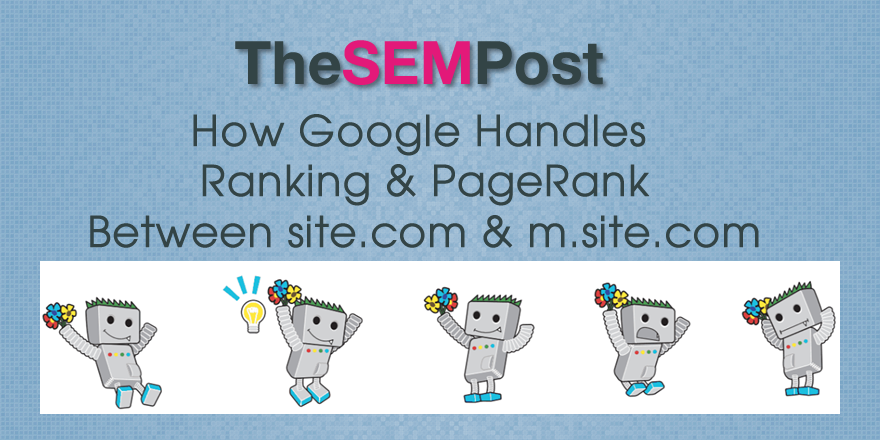 While Google recommends that webmasters utilizes responsive web design, as it also perfectly fine for users to implement a m.example.com mobile URL strategy. But this can sometimes result in links being split between two URLs which are essentially the same thing, just one is for desktop while the other is for mobile.
While Google recommends that webmasters utilizes responsive web design, as it also perfectly fine for users to implement a m.example.com mobile URL strategy. But this can sometimes result in links being split between two URLs which are essentially the same thing, just one is for desktop while the other is for mobile.
How does Google handle this for ranking purposes when links are split? Does each page get calculated separately and ranked accordingly or does Google combine the two as if they are the same?
The answer is yes, Google will combine the two separate URLs for calculating for PageRank & ranking purposes.
The way to think about it is that if there are two URLs representing the same piece of content (say, desktop and mobile), we’ll try to think of those two URLs as a single document in ranking, so links to either URL will count as a link to the combined document. So if the mobile version has 2 links and the desktop version has 3 links, we have a document with 5 links. When a user searches, we’ll rank that document as having 5 links, and then choose the correct URL to represent that document in search results based on whatever device the user is using.
So as long as you are correctly matching the two URLs together with annotations either on-page on in sitemaps, your links will be attributed from both pages as if it was a single page.
Jennifer Slegg
Latest posts by Jennifer Slegg (see all)
- 2022 Update for Google Quality Rater Guidelines – Big YMYL Updates - August 1, 2022
- Google Quality Rater Guidelines: The Low Quality 2021 Update - October 19, 2021
- Rethinking Affiliate Sites With Google’s Product Review Update - April 23, 2021
- New Google Quality Rater Guidelines, Update Adds Emphasis on Needs Met - October 16, 2020
- Google Updates Experiment Statistics for Quality Raters - October 6, 2020
[…] How Google Splits PageRank & Rankings Between Main Website and M. Mobile Site Version, The SEM Post […]